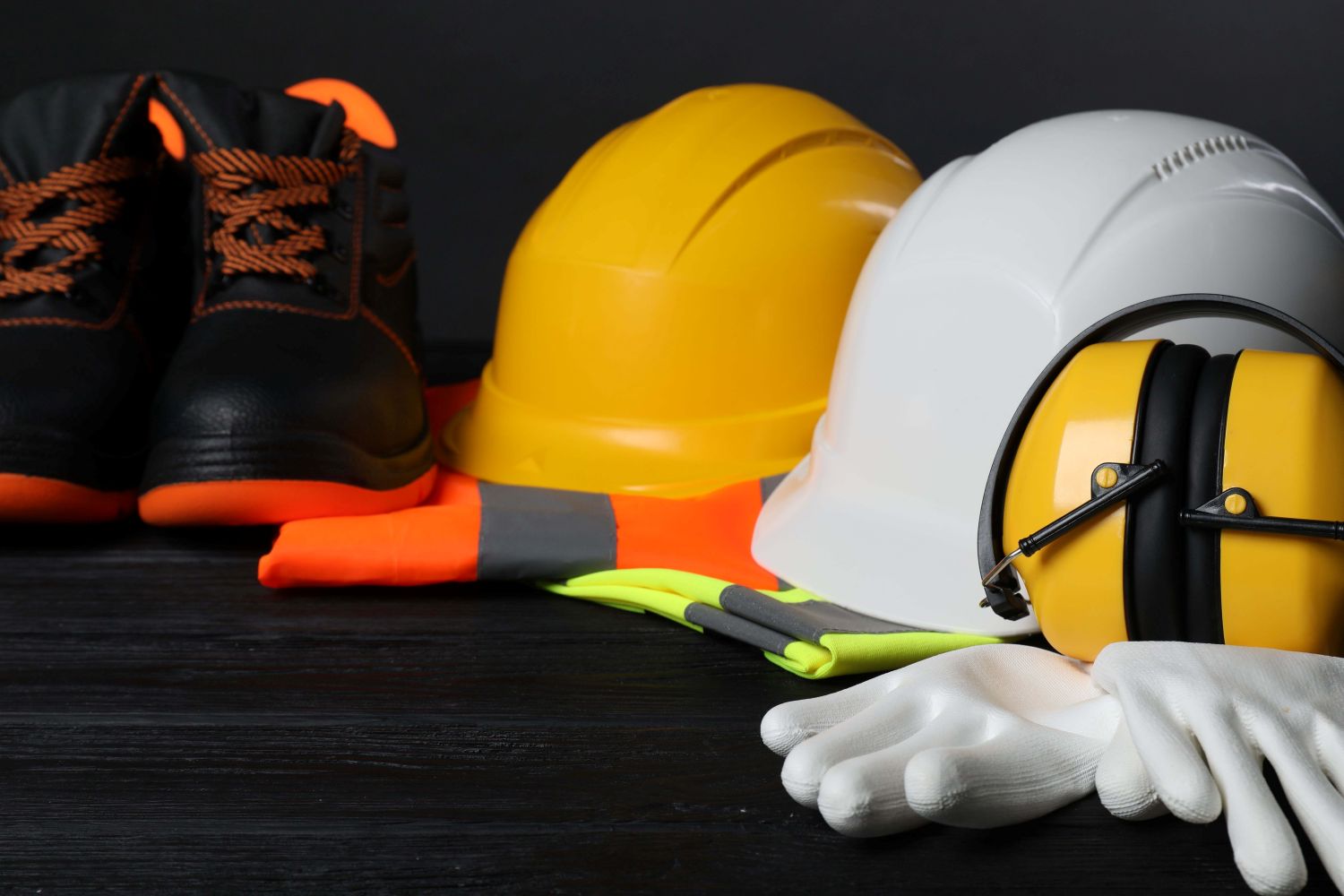Why good workers make risky choices on construction sites
Despite decades of increasingly stringent safety regulations and advanced training protocols, we are still seeing too many injuries and deaths on construction sites. It means we have to ask a crucial question - if workers are trained, regulations are in place and consequences are clear, why do safety breaches continue? The answer, it seems, lies not in a lack of knowledge or a defiance of rules, but deep within the intricate workings of the human mind, writes John Ridgeway.
For too long, the prevailing approach to construction safety has rested heavily on a prescriptive model that says we should implement rules, deliver training and enforce penalties. This "compliance-centric" strategy assumes that if individuals possess the knowledge and face sufficient deterrents, they will automatically adhere to safe practices.
However, human nature is rarely so straightforward. Workers may know the rule, but a myriad of psychological factors can influence their decision-making in the moment, leading to a dangerous gap between knowing what to do and actually doing it. This is the chasm between compliance - adherence to avoid negative consequences and genuine commitment. Bridging this gap requires an understanding of the very biases and social dynamics that subtly, or overtly, encourage risk-taking, even among experienced and safety-conscious individuals.
One of the most insidious psychological influences is optimism bias, sometimes called the "illusion of invulnerability." This fundamental human tendency causes individuals to overestimate their own likelihood of experiencing positive events and underestimate their likelihood of experiencing negative ones. On a construction site, this translates to the thought, "It won't happen to me."
A worker might skip wearing safety glasses for a "quick" task, convinced that an injury, while possible for others, couldn't possibly befall them in that brief moment. This bias is reinforced by past experiences where risks were taken without adverse outcomes, inadvertently strengthening the belief in one's own immunity. Addressing optimism bias requires more than just statistics - it demands personalised risk communication that resonates, perhaps through survivor stories (used thoughtfully and ethically) or by fostering peer-to-peer accountability where colleagues actively challenge complacent attitudes. Making the consequences of actions tangible and immediate can also help to break through this cognitive blind spot.
It can never happen to me
Another potent cognitive distortion is confirmation bias, where individuals tend to seek out, interpret and remember information in a way that confirms their pre-existing beliefs or hypotheses. On a construction site, this manifests as "I've always done it this way, and it's always been fine." A worker might dismiss new safety protocols or warnings if they contradict their long-standing, seemingly successful methods. They might selectively remember instances where their shortcuts worked, overlooking near misses or the sheer statistical improbability of their continued luck. Counteracting confirmation bias necessitates creating a culture that encourages critical self-reflection and challenges assumptions. Safety briefings should prompt active questioning rather than passive reception and diverse perspectives should be intentionally sought in safety discussions to expose alternative viewpoints and data.
The availability heuristic is another cognitive shortcut that influences risk perception. This bias causes individuals to overestimate the likelihood of events that are easily recalled or vivid in memory, often due to recent media exposure or personal experience. A highly publicised accident on another site might temporarily heighten vigilance, but common, less dramatic hazards that occur frequently might be underestimated because they don't generate the same emotional impact or media attention.
To combat this, safety communication needs to be varied and consistently refresh reminders about routine, but significant hazards, ensuring they remain prominent in workers' minds without desensitising them through repetition of the same messages. Regular training for common incidents, even minor ones, can make them more "available" in memory, boosting awareness.
Furthermore, anchoring bias can subtly undermine dynamic risk assessment. This bias describes the human tendency to rely too heavily on the first piece of information offered (the "anchor") when making decisions. If an initial risk assessment for a task is conducted under one set of conditions, that initial assessment can become an "anchor," making it difficult for workers to adequately adjust their perception of risk if site conditions or tasks change.
This leads to a rigid adherence to outdated safety plans, even when circumstances demand immediate re-evaluation. The solution lies in cultivating a culture of constant re-evaluation, where workers are empowered to pause, reassess and challenge existing plans if conditions deviate, moving from a static safety mindset to a dynamic, adaptive one.
Where is the shock factor?
Finally, loss aversion, the psychological phenomenon where the pain of losing something is greater than the pleasure of gaining an equivalent amount, also plays a role. Workers might perceive the "loss" of time, convenience, or perceived efficiency by adhering strictly to safety protocols as more impactful than the less tangible "gain" of avoiding an injury. Framing safety in terms of clear gains - increased productivity through fewer incidents, better health, a stronger reputation - rather than simply avoiding negative outcomes, can shift this perception.
Beyond individual cognitive biases, the social environment of a construction site exerts a powerful influence through peer pressure. The desire to conform, not to appear weak, slow, or unwilling to pull one's weight, can lead individuals to compromise safety standards. This can manifest as groupthink, where a cohesive group of workers suppresses dissenting safety concerns to maintain harmony, leading to collectively risky decisions. This is exacerbated by a pervasive "macho" culture that, while less common today, historically equated risk-taking with toughness or efficiency, implicitly shaming those who prioritise safety.
When unsafe practices become routine and accepted by a group, it leads to the normalisation of deviance, where risky behaviours gradually become the unwritten "norm." Addressing these social pressures requires visible and unwavering leadership commitment to safety, demonstrating that it is a non-negotiable value, not merely a rule. Empowering workers to speak up - through anonymous reporting channels, open forums, or by fostering a strong sense of psychological safety where challenging unsafe acts is encouraged, not penalised - is crucial. Celebrating safety champions, particularly those who demonstrate courage in challenging unsafe practices, reinforces desired behaviours and shifts cultural norms.
Our brains also rely on cognitive shortcuts, or heuristics, to manage the overwhelming amount of information and decisions we face daily. While often efficient, these shortcuts can lead to errors in safety-critical contexts. Automaticity and habit are powerful examples; when performing routine tasks, workers can operate on autopilot, bypassing conscious thought. This is highly efficient for mundane activities, but dangerous when conditions change or unexpected elements arise, as the mind isn't actively scanning for new hazards. Introducing novelty into safety routines, regularly rotating tasks, or implementing 'forcing functions' in equipment that physically prevent unsafe actions can disrupt this autopilot mode.

Attention residue is another factor, occurring when our minds are distracted by previous tasks or external thoughts. When workers are multitasking or mentally preoccupied by personal issues, their cognitive focus on the immediate safety-critical task is significantly reduced, leading to errors. Encouraging single-tasking, enforcing regular breaks and providing access to stress management resources can help workers achieve greater mental clarity on site.
Lastly, under pressure or with incomplete information, individuals often resort to bounded rationality, making "good enough" decisions rather than optimal ones. This is particularly problematic in fast-paced construction environments where immediate action is often required. Providing clear, concise, and timely safety information, reducing decision fatigue, and fostering a culture where asking for clarification is seen as a strength, not a weakness, can mitigate the risks associated with rushed decisions. Fatigue and stress, whether physical or mental, directly impair cognitive function, leading to reduced vigilance, slower reaction times and an increased likelihood of errors. Prioritising proper scheduling, enforcing adequate rest breaks, and promoting mental health awareness and support services are fundamental interventions to address this.
Ultimately, truly effective site safety compliance transcends the enforcement of rules - it demands a sophisticated understanding of human behaviour and a deliberate shift towards a psychologically safe culture. This requires visible and unwavering commitment from leadership, demonstrating that safety is a core value, not just a procedural checkbox.
It means moving beyond a punitive approach to incidents and embracing a blame-free learning culture that encourages reporting of near misses, allowing for root cause analysis that addresses systemic and psychological factors. Empowering every worker to actively participate in identifying hazards and proposing solutions, fostering open communication and continuously learning from every experience will embed safety into the very fabric of the organisation.
By acknowledging and strategically addressing the intricate psychological underpinnings of human behaviour on site, the construction industry can transform its safety landscape, moving from merely complying with regulations to genuinely creating environments where every individual is committed to their own safety and the safety of their colleagues, building a truly proactive and safer future.
Additional Blogs

How construction can cut Its carbon footprint by caring for soil
Soil is often dismissed as mere dirt, but it is one of the planet’s most powerful carbon stores, holding more than all of the world’s forests combined. Yet in our rush to build, pave and develop, we...
Read moreWhat is bridging damp? How it happens and how to fix it
Bridging damp happens when moisture finds a path around the building’s damp-proof course (DPC) so it reaches your internal walls and skirting. If you see damp patches rising above the skirting or...
Read more

The silent death of the fixed-price contract
For decades, the fixed-price contract has been the backbone of construction procurement. It promised certainty with a defined scope, an agreed sum and a clear transfer of risk from client to...
Read more